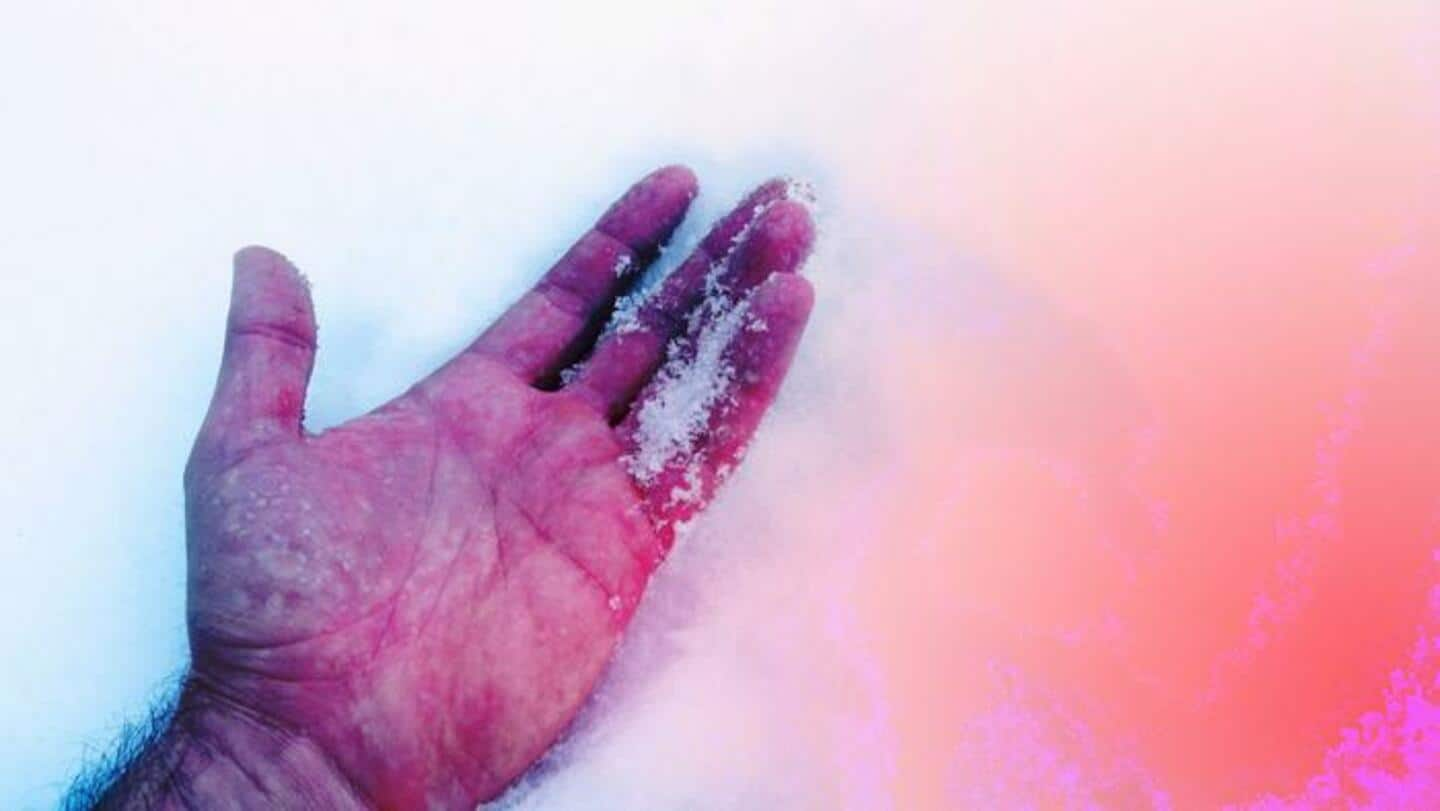
All about frostbites: Causes, symptoms, prevention, and more
What's the story
Frostbite is a condition when your skin and underlying tissues freeze and gets cold, inflamed, hard, pale, and numb. Extreme cold and windy weather or chilled water can cause this condition, and frostbite can sometimes permanently damage your skin, bones, muscles, and other tissues. You can get frostbite even if your skin is fully covered. Read on to know more about this dangerous condition.
Information
What is frostbite?
Frostbite damages the skin and tissue, and usually occurs when your skin gets exposed to extremely cold temperatures, below -0.55C. The colder it is, the faster you develop the symptoms. You can get frostbite in just 30 minutes at -26 degrees Celsius.
Stages
Several stages involved in a frostbite
Frostnip: One of the mildest forms of frostbite, frostnip causes numbness in the affected areas. It can cause pain and tingling but no permanent skin damage. Superficial frostbite: Causing slight changes in skin color, this stage may lead to stinging, swelling, and burning. Severe frostbite: This makes your skin turn white or blue-gray, while your tissues turn black and hard at this stage.
Symptoms
Symptoms of the condition
During the early stages of the condition, you might feel cold skin and a numb and prickly feeling. Your skin usually turns pale white or yellow. Your skin can also turn red, purplish, or brown depending on the severity of the stage. During the intermediate stage, your skin looks shiny and feels hard. You may also experience clumsiness due to muscle and joint stiffness.
Causes
Causes behind frostbite
Frostbite is usually caused due to exposure to cold weather conditions. Wearing clothes that do not protect against windy, or chilly weather, wearing tight outfits, or staying out in the cold for longer can trigger the condition. Your nose, fingers, hands, toes, feet, and ears are the first areas to freeze as they get affected by decreased blood flow in response to cold.
Prevention
How to prevent the condition
Try to stay indoors and limit your time outdoors as much as possible in chilly or cold weather conditions. Go through weather forecasts before heading outside. Stay warm and wear several layers of loose warm clothing along with windproof and waterproof outer garments. Cover your ears with heavy woolens and wear well-fitted socks and hand warmers that wick moisture and offer insulation.
Treatment
Is there any treatment available for the condition?
You can easily treat mild frostbite at home with simple first aid care. It can be treated by rewarming the skin where you need to take a warm water bath for 15-20 minutes and then move the affected area gently as it rewarms. Oral pain medicines or infection-fighting drugs may also be suggested by your doctor along with wound care techniques and therapies.